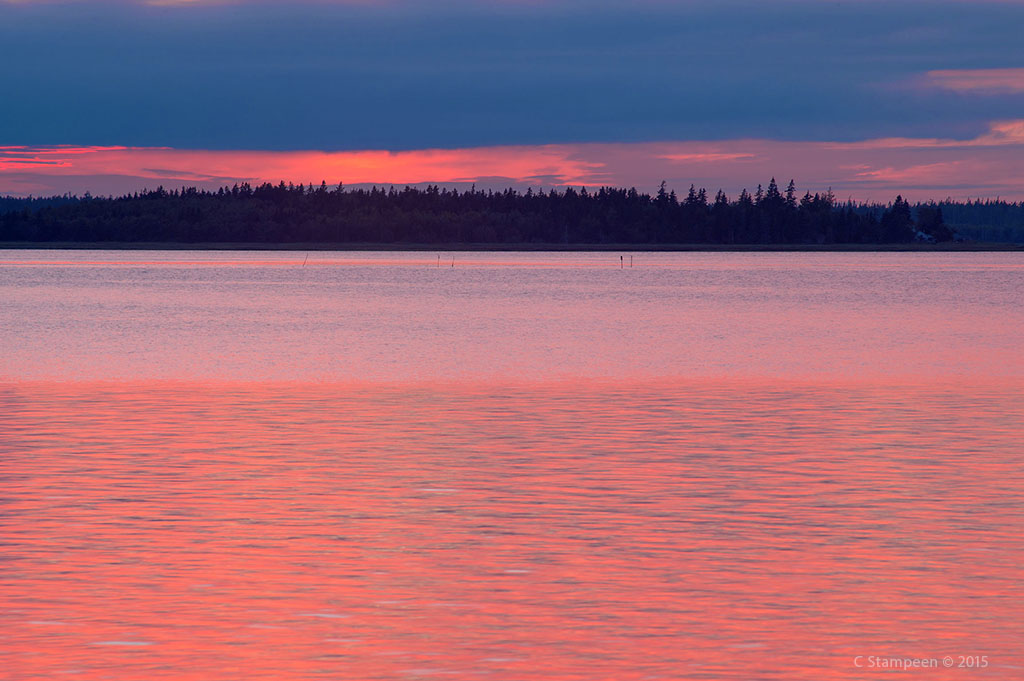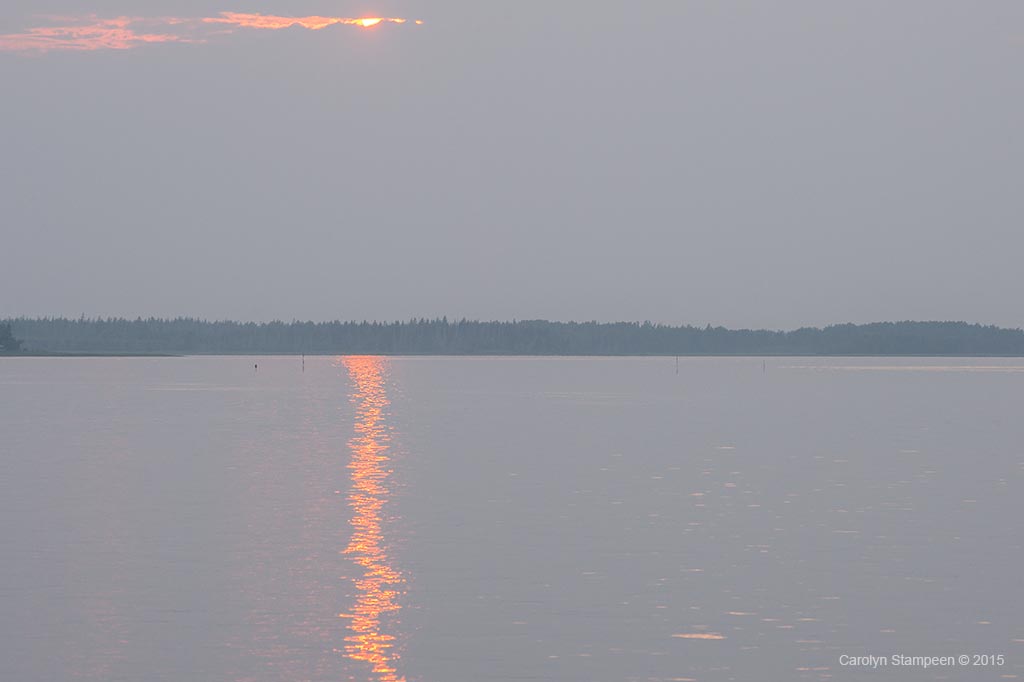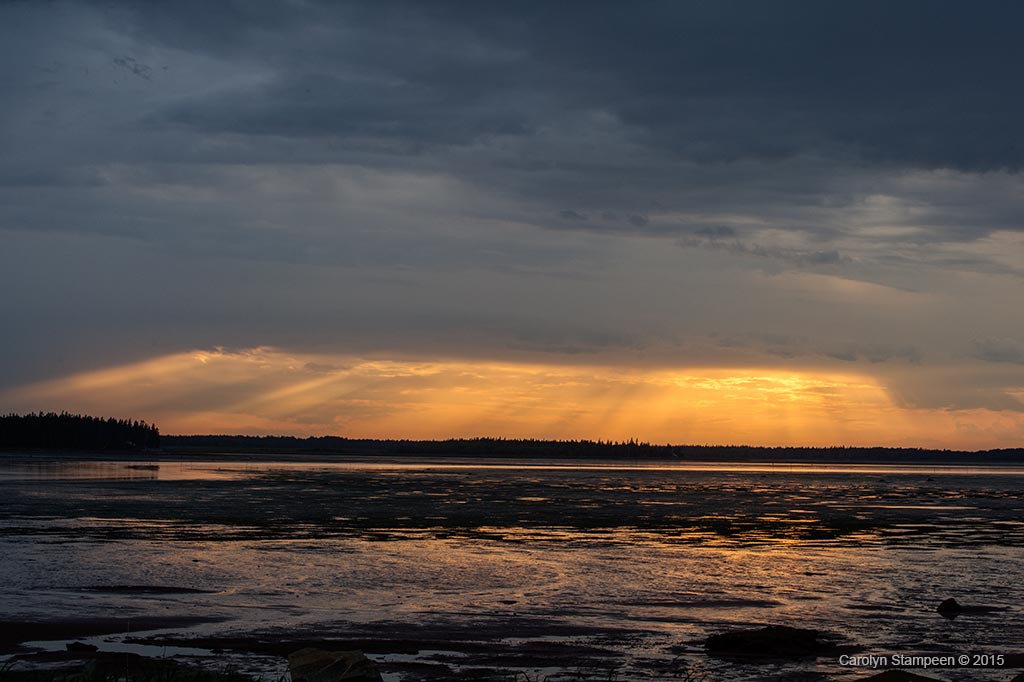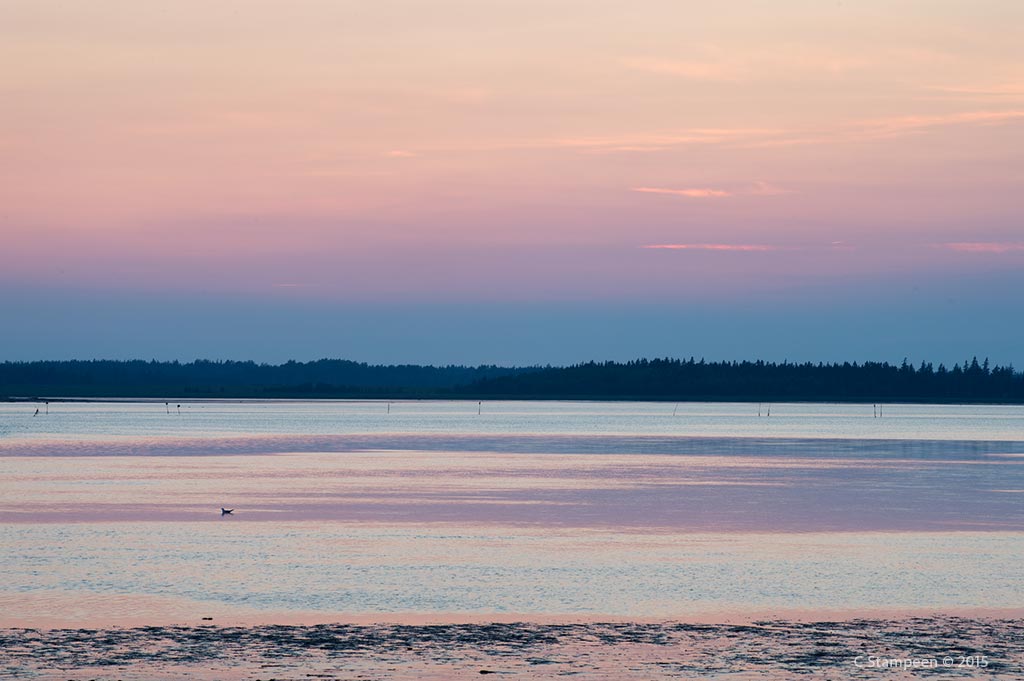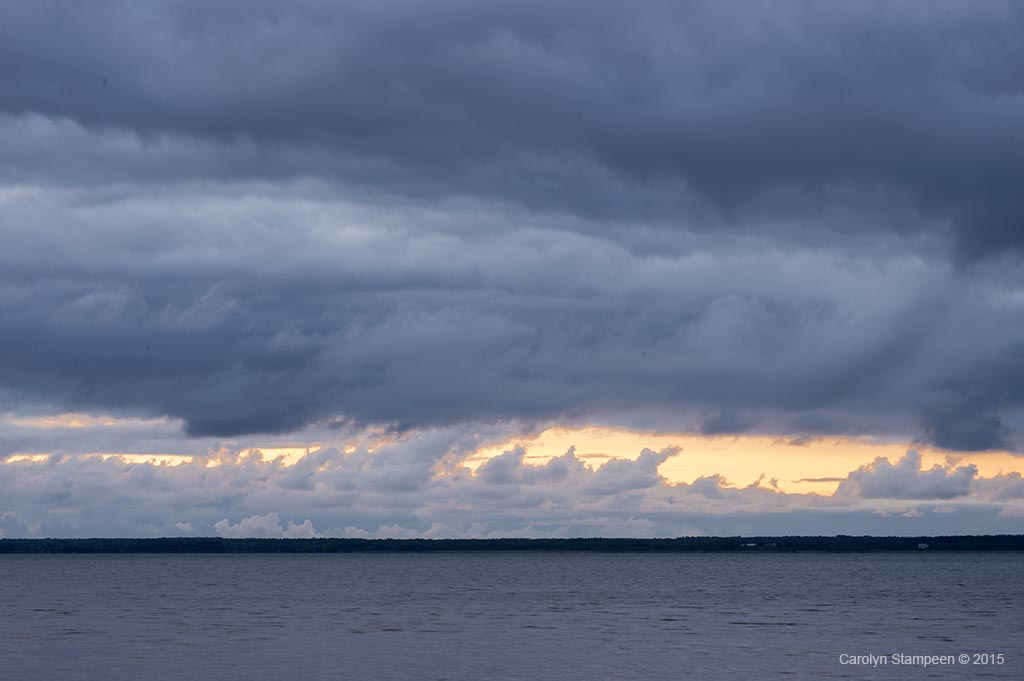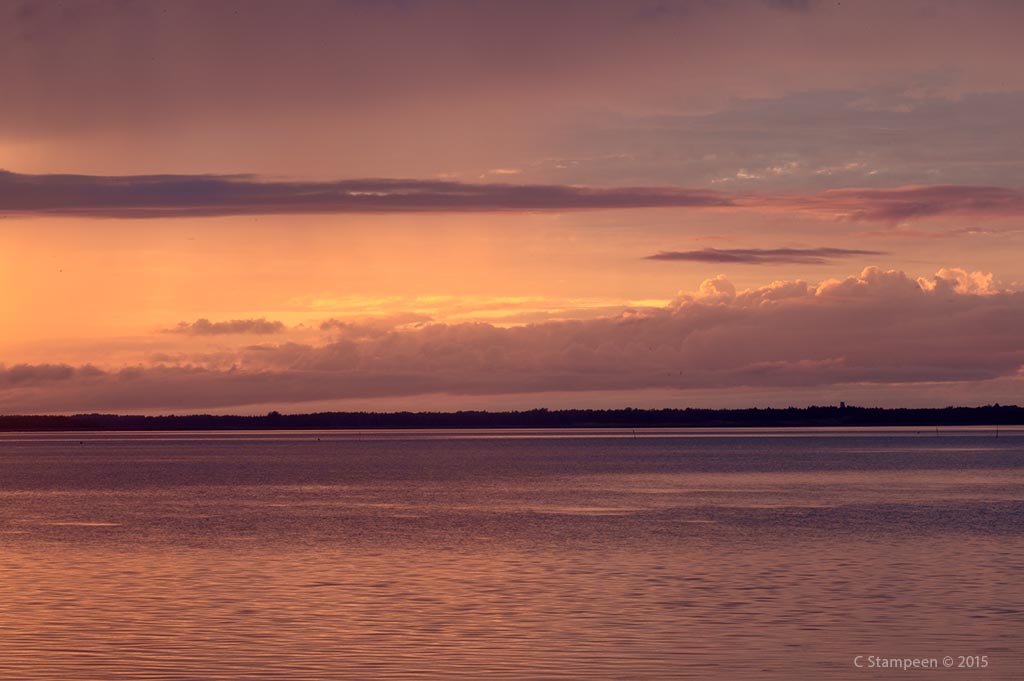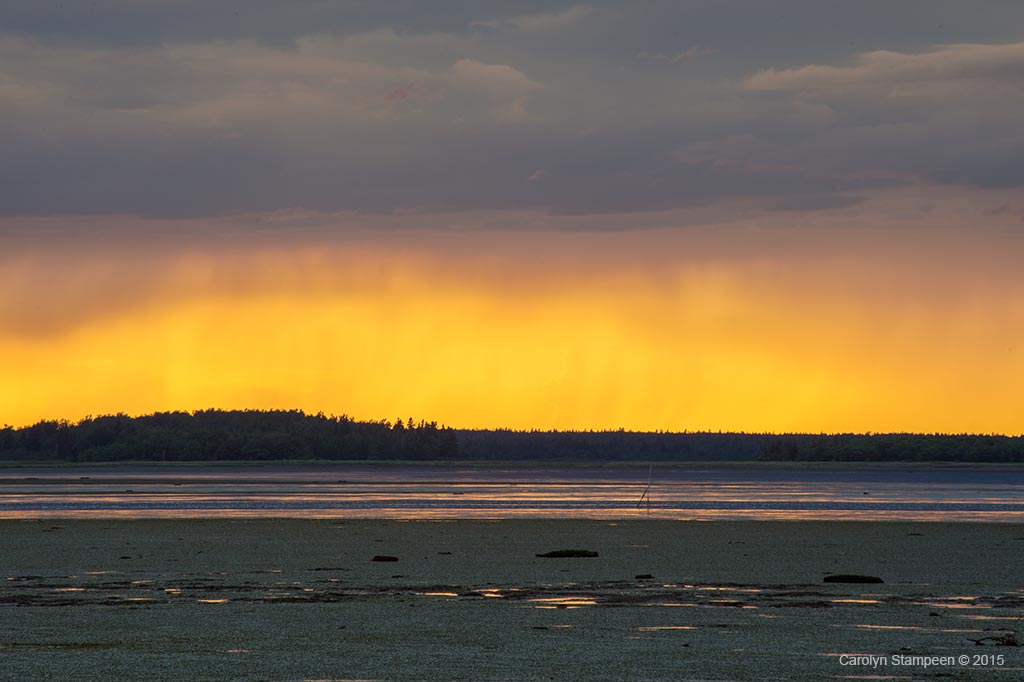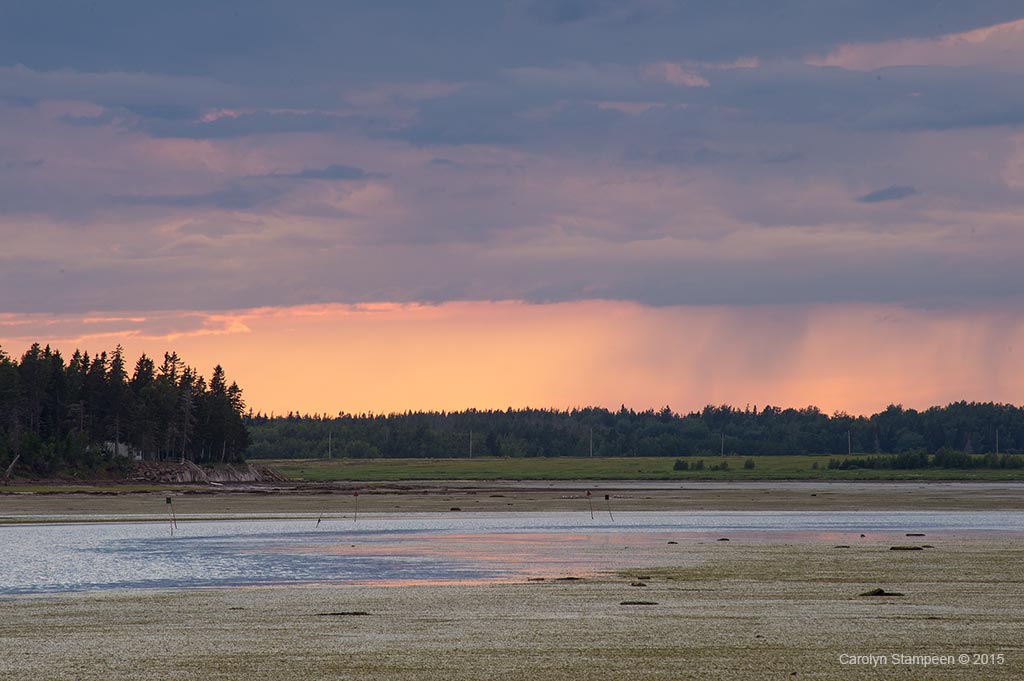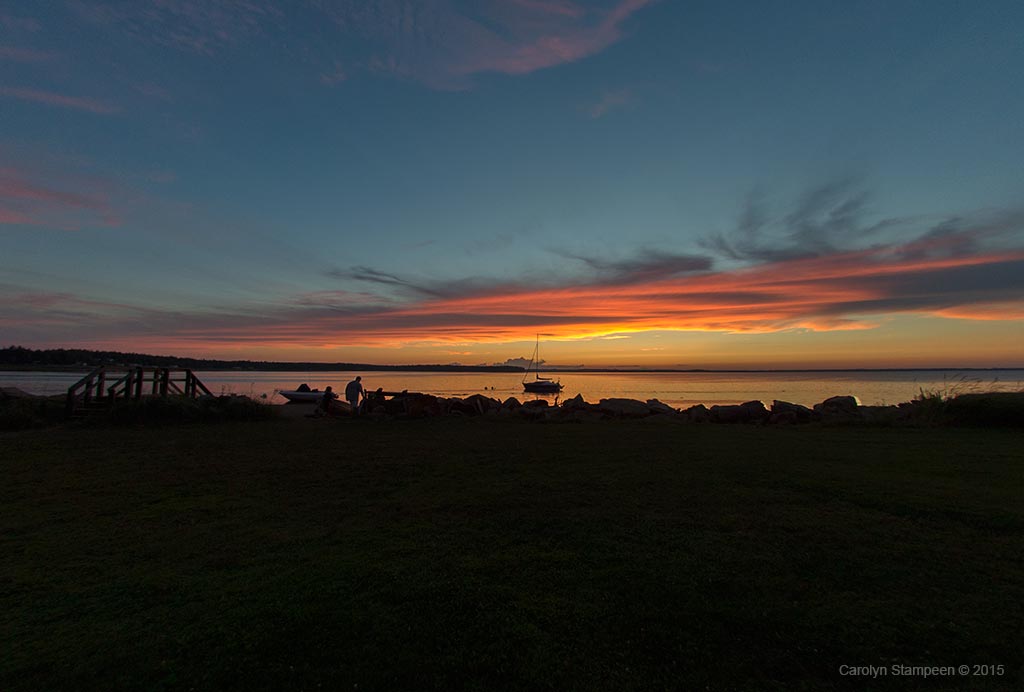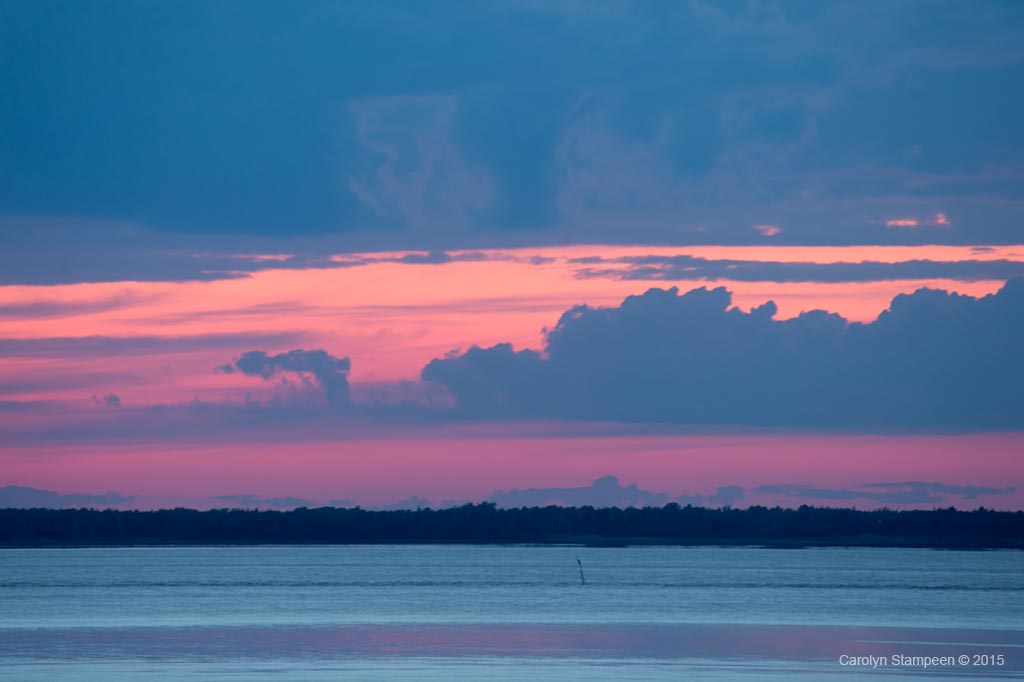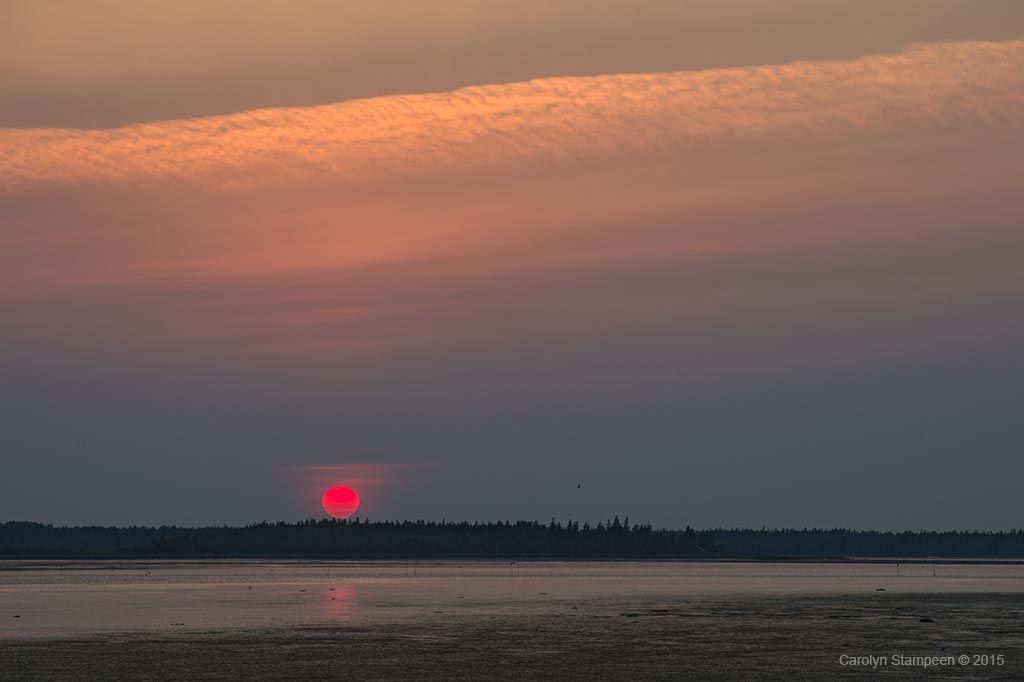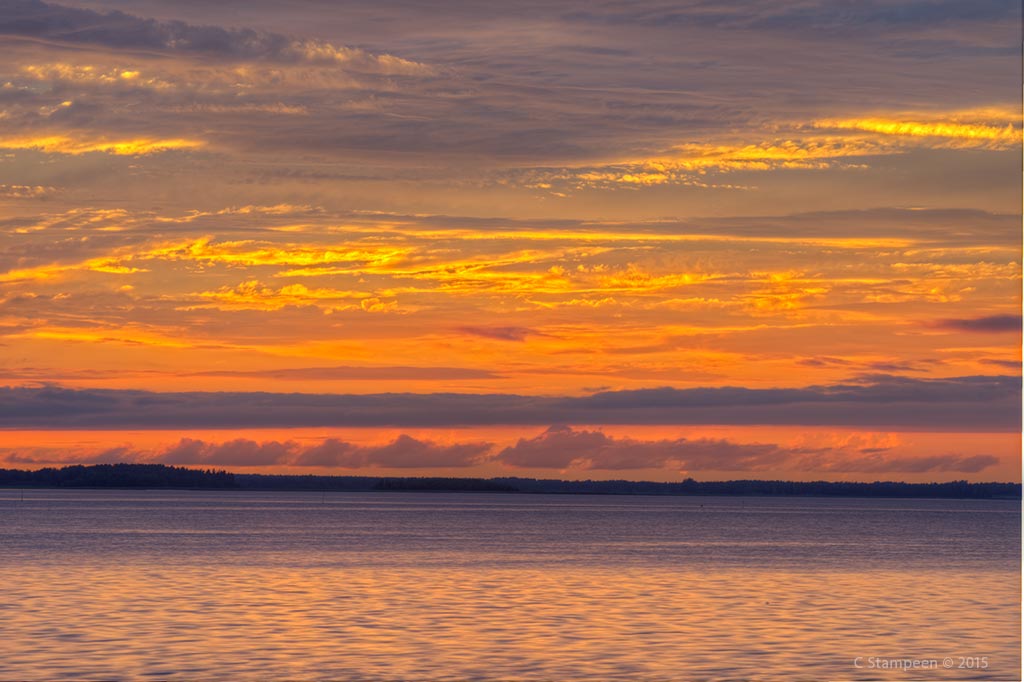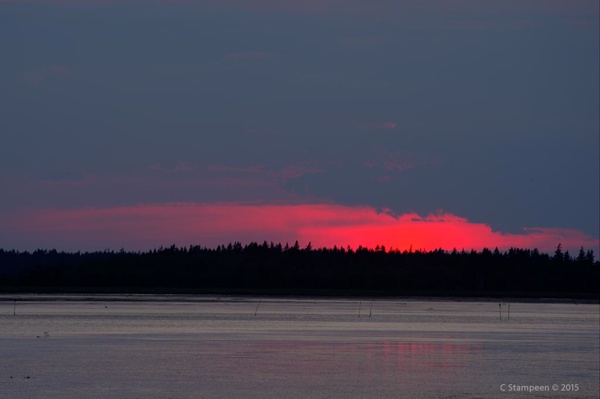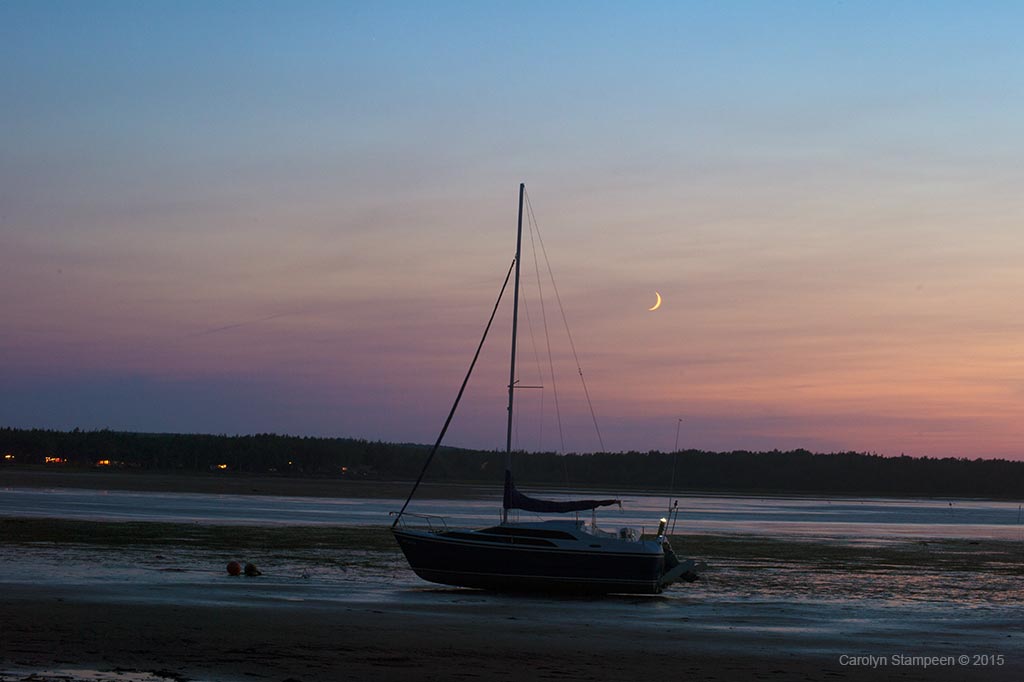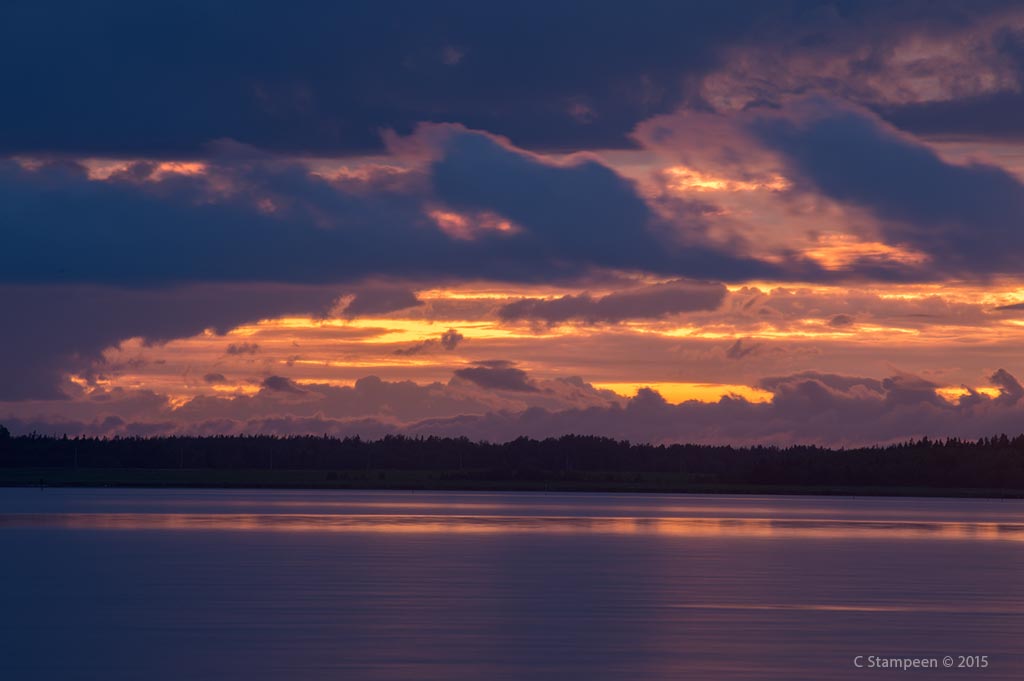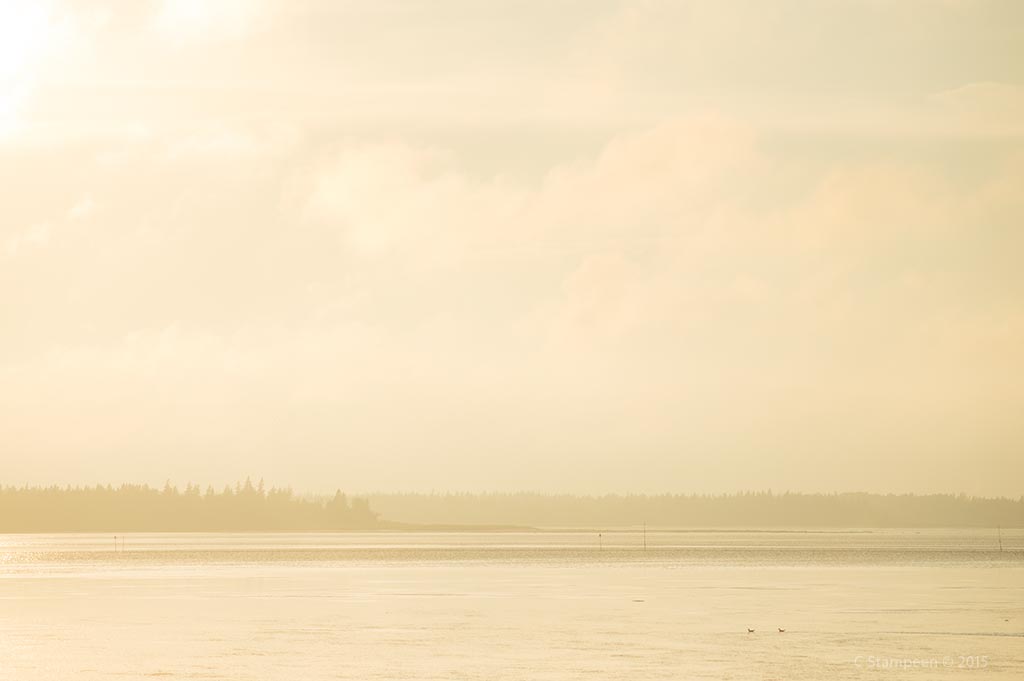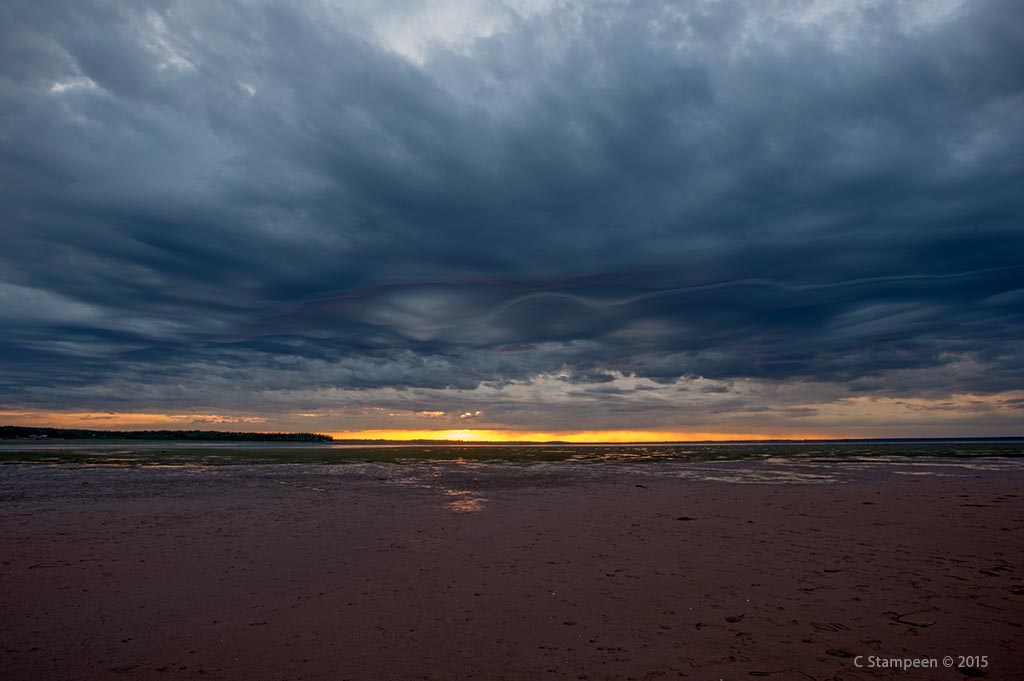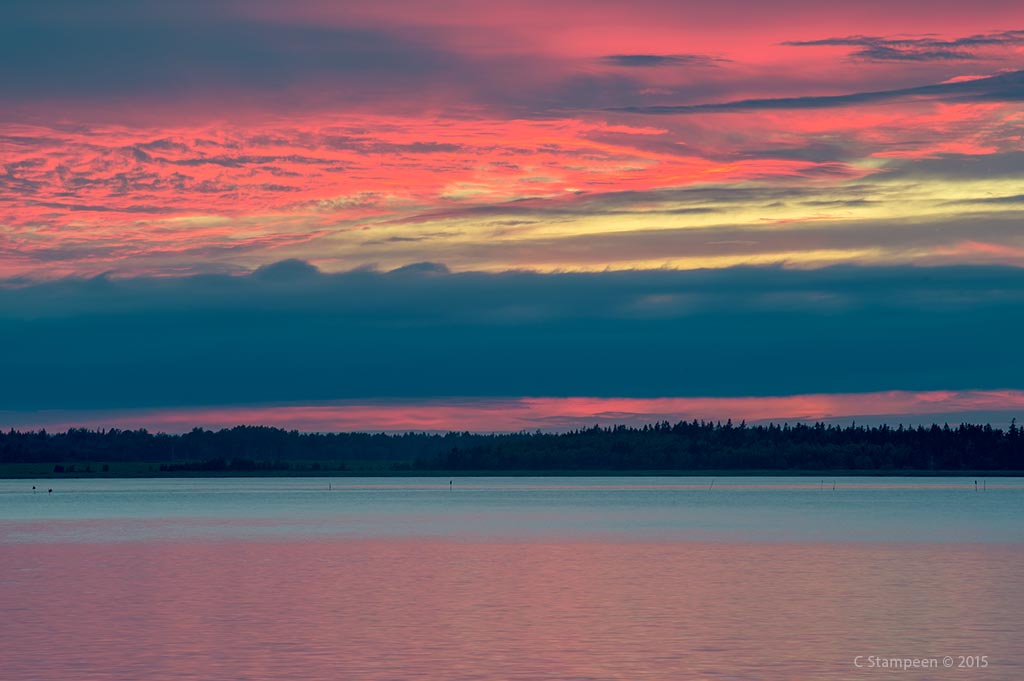Sunsets at the cottage are always a time to stop, grab a beverage and camera and sit to watch the spectacle. We face west and have a prime seat for one of the most beautiful daily exhibits with which nature graces us. Sometimes it’s a rowdy display; other times, a gentle disappearing of the sun as it sinks into thick clouds on the horizon. This summer, however, for the first time I can remember, the sun would just sink into the clouds too high off the horizon for any colour or dazzle. For the first month, it was the summer with strong winds and without sunsets. Except for one. Kind of. The sun peeked out for a moment to reflect orange onto beautiful lavender colours. It was a rare evening during which the wind had calmed so the water could lend itself to accentuating the quiet beauty, a feast for eyes longing to see splendour at the end of day.
All in all, there were only about a dozen sunsets during our stay, usually happening after a stormy day. Often they were very short-lived, as if there were a zipper opening up the clouds a bit then zippering shut again. It was the last night there that the wind was calm and the sun put on a real show for us. But even when the sun only peered out behind thick veils of cloud, sunset was a moment of glory. It still is, here in the city, but with power lines and other obstacles, not always as easy to appreciate fully.
Hints for sunset shots:
Bracket. Especially if the sun is not being obscured behind thick clouds.
If it looks too cloudy for a sunset, be prepared anyway. If the clouds break even a little along the horizon, the sky will be set up for a glorious show that you might miss if you are not there and ready.
As the sun gets closer to the horizon, it will move faster. You do NOT have time to go inside to get something.
If the sky is too clear for a lot of spectacular colour, turn with your back to the sun to see what it is lighting. This is a glorious lighting that makes mundane look magical.
When the sun disappears under the horizon line, stick around for at least another 30 minutes, as this is the time when the potential for something really amazing is at its highest.
Colours change during the process. Hot, vibrant yellows and oranges can fade to reds and pinks; blues and violets complement the warmer tones. One sunset can hold a lot of different-looking shots.
As the sun continues to lower, cameras will need longer exposures or higher ISOs or both. It’s helpful to have a tripod or to rest the camera on something stable and use the self-timer.
Set your exposure not pointing at the brightest part of the sky unless you are looking for a very black scene with light and colours where the sun is.
If there is water in your scene and it is rough and you don’t think it looks photogenic enough, set your camera for a longer exposure. This will flatten out the water. Beware, though, as this will also affect any other moving elements. If clouds are moving fast, things can look really dreamy or just blurry, depending on their speed and the shutter speed. Use your preview to give you an idea if things are working as you like. It’s digital! You can check your work as you go!

